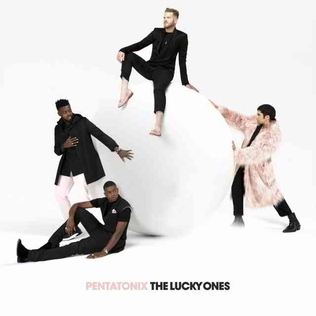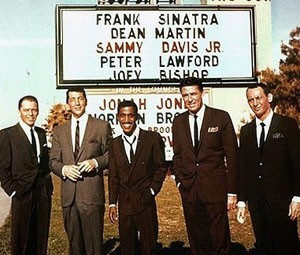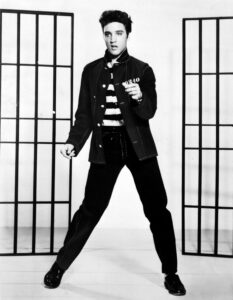
I first heard about Pentatonix in 2017, I think? It was just before Avi Kaplan left anyway. I was browsing YouTube, as I do, and that is how I found them, looking for a capella music. I am glad I did. PTX relax me so much and their music is even better with headphones on and is great for travelling on long journeys.
There is a playlist from my YouTube channel at the bottom of this page that contains some of my favourite songs by them. There are so many to choose from!
Beneath the playlist, you will find an index of all the songs featured in it.
About Pentatonix
Pentatonix (abbreviated PTX) is an American a cappella group from Arlington, Texas, consisting of vocalists Scott Hoying (baritone), Mitch Grassi (tenor), Kirstin Maldonado (alto), Kevin Olusola (vocal percussion and baritone), and Matt Sallee (bass). Characterized by their pop-style arrangements with vocal harmonies, basslines, riffing, percussion, and beatboxing, they produce cover versions of modern pop works or Christmas songs, sometimes in the form of medleys, along with original material. Pentatonix formed in 2011 and subsequently won the third season of NBC’s The Sing-Off, receiving $200,000 and a recording contract with Sony Music. When Sony’s Epic Records dropped the group after The Sing-Off, the group formed its YouTube channel, distributing its music through Madison Gate Records, a label owned by Sony Pictures. Their YouTube channel currently has over 19 million subscribers and 5 billion views. The group’s video tribute to Daft Punk had received more than 355 million views as of November 20th, 2021.
Their debut EP PTX, Volume 1 was released in 2012, followed by their holiday release PTXmas the same year, with Pentatonix’s third release, PTX, Vol. II, debuting at number 1 on Billboard‘s Independent Albums chart and number 10 on the Billboard 200 in 2013. In May 2014, Pentatonix signed with RCA Records, a flagship label of Sony Music Entertainment, while in the same year, the group released their fourth EP, PTX, Vol. III, and two full-length studio albums; PTX, Vols. 1 & 2, a compilation album released in Japan, Korea and Australia, and their second-holiday release, That’s Christmas to Me, with the album certified gold by the Recording Industry Association of America (RIAA), platinum on December 24th, 2014, and double platinum on February 11th, 2016, becoming the highest-charting holiday album by a group since 1962, and the fourth-best-selling album in the United States in 2014. The following year, Pentatonix released their eponymous album, their first consisting mostly of original material, which debuted atop the US Billboard 200 chart for the first time in their career, followed by a third Christmas album, A Pentatonix Christmas, in 2016, and a new EP, PTX, Vol. IV – Classics, the year after.
In September 2017, Avi Kaplan, the group’s original bass, left the group amicably and was replaced by Matt Sallee, who was featured on their next album PTX Presents: Top Pop, Vol. I.
Pentatonix has won three Grammy Awards: they were the first a cappella act to win Best Arrangement, Instrumental or A Cappella, doing so in 2015 and 2016, and Best Country Duo/Group Performance in 2017.

Pentatonix’s Career
Background
Pentatonix began with Kirstin Maldonado (born May 16th, 1992), Mitch Grassi (born July 24th, 1992), and Scott Hoying (born September 17th, 1991) who grew up together and were schoolmates at Martin High School in Arlington, Texas. For a local radio show competition to meet the cast of Glee, they arranged and submitted a trio version of Telephone, the hit song by Lady Gaga and featuring Beyoncé. Despite losing the competition, their singing sparked attention at their school, and they began performing. Their version of Telephone subsequently gained attention on YouTube.
Hoying and Maldonado both graduated from Martin High School in 2010, Grassi in 2011. Hoying went off to the University of Southern California (USC) to pursue a degree in popular music performance, while Maldonado pursued a degree in musical theatre at the University of Oklahoma. While at USC, Scott Hoying joined an a cappella group called SoCal VoCals. He found out about The Sing-Off from another member of the group, Ben Bram (also their arranger, producer, and sound engineer), and was encouraged to audition for the show. He persuaded Maldonado and Grassi to join him, but Bram suggested having a bass and beatboxer as well to support the group. Through a mutual friend, Hoying met Avi Kaplan (born April 17th, 1989), a highly recognized vocal bass in the a cappella community. Then, the trio found Kevin Olusola (born October 5th, 1988) on YouTube, where one of his videos in which he was simultaneously beatboxing and playing the cello (called celloboxing) had gone viral. Olusola was born in Owensboro, Kentucky, and graduated pre-med from Yale University.
The group met the day before the auditions for the third season of The Sing-Off began. The group successfully auditioned for the show and eventually went on to win the title for 2011 (season three).
Pentatonix, as suggested by Scott Hoying, is named after the pentatonic scale, a musical scale or mode with five notes per octave, representing the five members of the group. They replaced the last letter with an x to make it more appealing. The quintet derives its influences from pop, dubstep, electro, reggae, hip hop, and classical music.
Read more about Pentatonix here.

The Sing-Off (2011)
Pentatonix performed the following songs on season three of The Sing-Off. The group did not perform in Episode 1 or 3. Click on the links below to see them perform the relevant songs.
Episode 2: E.T.
Episode 4: Your Love Is My Drug and Piece Of My Heart.
Episode 5: Video Killed The Radiostar.
Episode 6: Love Lockdown.
Episode 7: Medley of Oops!… I Did It Again, Toxic and Hold It Against Me.
Episode 8: Born To Be Wild and Stuck Like Glue.
Episode 9: OMG and Let’s Get It On.
Episode 10: Forget You / Since U Been Gone (Medley) and Dog Days Are Over.
Episode 11 (Finale): Without You, Give Me Just One Night (Una Noche) and Eye Of The Tiger.
Read more about The Sing-Off season three here.
PTX Vol. 1 And PTXMas (2011 – 2013)
Scott Hoying and Kirstie Maldonado dropped out of college in hopes of winning The Sing-Off, while Mitch Grassi skipped his high school graduation to audition for the show. After they won, all of the members relocated to Los Angeles in order to pursue a career as recording artists. The main goal of the group was to become the first mainstream a cappella group in recent times.
In January 2012, having signed with Sony Pictures-owned label Madison Gate Records, the group began working on their first album with producer Ben Bram. During that six-month period of picking covers and writing originals, Pentatonix released covers of both popular and classic songs on YouTube. In interviews, the members mention that it was a way to stay relevant to their audience that enjoyed their work on The Sing-Off, in addition to gaining new fans. Almost all of their covers, including Somebody That I Used to Know by Gotye featuring Kimbra, Gangnam Style by PSY and We Are Young by Fun, went viral on YouTube.
Their first EP, PTX, Volume 1, was released on June 26, 2012, charting at number 14 on the US Billboard 200 chart and number 5 on the digital chart. It sold 20,000 copies in its first week of release. The group promoted the album through press appearances on Access Hollywood, VH1 The Buzz, Marie, and local television shows. Pentatonix was also featured on the Chinese version of The Sing-Off as guests where Kevin showcased his fluency in Mandarin. Pentatonix also embarked on its first national headlining tour in the fall of 2012. The tour was sold-out and spanned 30 cities. Opening acts consisted of Alexander Cardinale and SJ Acoustic Music.
The group released their Christmas EP, PTXmas, on November 13, 2012. The group released their video of an original arrangement of Carol of the Bells the following day. The group performed on Coca-Cola Red Carpet LIVE! @ The 2012 American Music Awards Pre-Show on November 18, the Hollywood Christmas Parade, and the 94.7 THE WAVE Christmas Concert Starring Dave Koz and Kenny Loggins on December 16. The group was also featured guests on Katie Couric (ABC), Home and Family (Hallmark), The Tonight Show with Jay Leno, and Big D NYE. Ryan Seacrest’s website named Pentatonix the 2012 Featured Artist of the Year for their expansive growth online in just one year. The Christmas album was re-released on November 19, 2013, as a deluxe edition containing two additional tracks. One of these, Little Drummer Boy charted in several Billboard categories including peaking at number two on the Streaming Songs chart and number one on the Holiday 100 chart, receiving a number of Billboard awards. PTXmas reappeared on the Billboard charts again in November 2014, placing No. 24 on the Billboard 200 and No. 4 on the Holiday charts, giving Pentatonix three albums on the Billboard 200 at the same time. On Billboard‘s 2014 Year-End charts, PTXmas was No. 8 on the Catalogue Albums chart and No. 119 on the Top Billboard 200 Albums chart, with Pentatonix ranked as No. 46 on the Top Billboard 200 Artists chart. As of December 24, 2014, PTXmas has sold 356,000 copies.



PTX Vol. II (2013 – 2014)
The band went on their second national headlining tour from January 24, 2013, to May 11, 2013, and simultaneously wrote additional original material for their second EP, PTX, Vol. II. The group released the first single, a cover of Macklemore and Ryan Lewis’ Can’t Hold Us on August 20, 2013, which to date has over 90 million views. The group also promoted PTX, Vol. II on The Ellen DeGeneres Show in November 2013, after the success of The Evolution of Beyoncé mashup on YouTube. That week, the band was featured on Around the World with Diane Sawyer and were named Persons of the Week.
In March 2013, Pentatonix and violinist Lindsey Stirling released their cover of the Imagine Dragons song Radioactive and won for Response of the Year at the YouTube Music Awards. In July of the same year, along with American Idol contestant and fellow Arlington Texan Todrick Hall, they released The Wizard of Ahhhs, which mashes up several songs to create one song. The music video follows the story of the 1939 film The Wizard of Oz with the artists dressed as its numerous lead roles.
PTX Vol. II was released on November 5, 2013, in conjunction with their second album single on YouTube: a medley of Daft Punk songs. The video went viral, garnering more than ten million views in the first week, and as of December 2018, had over 290 million views. The medley was later nominated for and won Best Arrangement, Instrumental or a Cappella of the 57th Grammy Awards. PTX, Vol. II debuted at number ten on the Billboard 200 and number one on the Independent charts, selling 31,000 copies in the first week. Pentatonix subsequently re-released a deluxe version of PTXmas on November 18, 2013, with two new tracks, Little Drummer Boy and Go Tell It On The Mountain. Their YouTube video of Little Drummer Boy, released near the end of November, garnered more than ten million views in the first week and reached number ten on the iTunes top songs charts worldwide. The song both debuted and peaked at number 13 on the Billboard Hot 100 chart for the week ending December 21, 2013. The video has over 200 million views as of December 2018.
In May 2014, Pentatonix signed with RCA Records, a flagship label of Sony Music Entertainment. On July 30, through the new label, the group released their first official album PTX, Vols. 1 & 2 in Japan, containing all of the songs from their two namesake EPs and four additional tracks, previously released as singles. It was released in Australia on August 15 and in the Philippines on September 26.


PTX Vol. III And That’s Christmas To Me (2014)
On August 7, 2014, Pentatonix announced that their third EP PTX, Vol. III would be released on September 23, 2014. The EP went up for pre-order on iTunes on August 11, 2014, and included a download of two tracks from the EP, Problem and La La Latch. PTX Vol. III debuted at number 5 on the Billboard 200.
The group also revealed on August a second full-length Christmas album, That’s Christmas to Me, titled after the title track of the album, an original song that was penned by Pentatonix themselves. The album was released on October 21, 2014 and peaked at number 2 on the Billboard 200, and number 4 on the Billboard Canadian Albums chart. A single from the album, the group’s cover of Mary, Did You Know, both debuted and peaked on the Billboard Hot 100 chart at number 26, at number 7 on Billboard‘s Adult Contemporary chart, and at number 44 on the Billboard Canadian Hot 100 chart. Another single That’s Christmas To Me, the title track from the album, also peaked at number 8 on the Billboard Adult Contemporary chart.
Pentatonix is also the first act to top both the Holiday Albums and Holiday Songs charts simultaneously since the Holiday 100 launched as a multi-metric tabulation in December 2011. The album is also the highest-charting holiday album by a group since 1962.
During the holiday season, 7 songs from That’s Christmas to Me are charted on Billboard‘s Holiday Digital Songs chart. On December 10, 2014, That’s Christmas to Me was certified gold by the Recording Industry Association of America. On December 24, 2014, the album was certified Platinum. By year’s end (December 31, 2014), Billboard reported the album had reached a total of 1.14 million copies sold—becoming the 4th best selling album of 2014 by any artist of any genre (being surpassed only by Taylor Swift’s 1989, the Frozen Soundtrack, and Sam Smith’s In the Lonely Hour) and was the Top-Selling Holiday Album for 2014. On February 11, 2016, the album was certified Double Platinum.


Self-Titled Album, A Pentatonix Christmas, And PTX, Vol. IV (2015 – 2017)




In late December, Scott Hoying stated that for 2015, “Pentatonix is transitioning towards original music”. A release of a full-length album consisting of only original material is planned. Hoying also stated, “We’re at the point in our careers now [where] we must go to original music, and we want to go to original music; we have so much to say, and I think it’s gonna be quite a journey.”
On August 28, 2015, Pentatonix announced on social media that a self-titled album, the group’s third full-length album and the first album made of mostly original music, would be released on October 16, 2015.
On September 4, 2015, Pentatonix released Can’t Sleep Love the first single from Pentatonix upcoming album. Two weeks later on September 18, 2015, a second version featuring Tink was released online. On October 9, 2015, Pentatonix released their second single, a cover of Jack Ü and Justin Bieber’s Where Are Ü Now. The album ended up being released one day early as a surprise gift to their fans. On that same day, Pentatonix released their third single, Sing.
The album debuted at number 1 on the US Billboard 200. In the US, the album started with 98,000 units (88,000 in pure album sales). On February 8, 2016, the album was certified Gold.
On April 14, 2016, the music video was released for Pentatonix’s cover with Jason Derulo of Shai’s If I Ever Fall In Love. In August 2016, the music video of Pentatonix’s Perfume Medley, a medley of songs by the Japanese girl group Perfume, was also released. The medley consisted of the songs Spending All My Time, Pick Me Up, Chocolate Disco, and Polyrhythm.
Their second full-length Christmas album, titled A Pentatonix Christmas, was released on October 21, 2016. It features 11 songs, including the two originals The Christmas Sing-Along and Good to Be Bad. It debuted on the Billboard 200 at number three with 52,000 albums sold in its first week and later peaked at number one. The album also debuted atop the Billboard Holiday Albums chart, their second number one on that chart after That’s Christmas to Me.
Their fifth EP, PTX, Vol. IV – Classics, was released on April 7, 2017. It marked a departure from the group’s typical sound, focusing on covers of standards of rock, blues, country, and older pop music.
New Bass, Top Pop, Vol. I, Christmas Is Here!, And The Best Of Pentatonix Christmas (2017- 2019)
In May 2017, the band announced in a video that Avi Kaplan would leave the group following their upcoming tour. The split was amicable and centred on his inability to keep up with the touring demands of the group and deal with the distance from his family.
On July 31, the group released the single Dancing on My Own, a cover of the song by Robyn, their first release without Kaplan (although he was still a member at the time, as the tour was ongoing). Olusola performed cello on the song in lieu of a bass vocalist.
Kaplan performed his last concert with Pentatonix on September 3, 2017, in Essex Junction, Vermont. On October 13, Hoying introduced Matt Sallee as the group’s new bass. The band’s first official releases with Sallee were the songs from the deluxe edition of A Pentatonix Christmas, which was released on November 27, 2017. Sallee is also featured on their cover of the Camila Cabello song Havana, which was released as a single from their Top Pop Vol. 1 album on February 23, 2018.
On February 27, 2018, the group announced via their social media the upcoming release of a new album titled PTX Presents: Top Pop, Vol. I on April 13, 2018, to be followed by a tour in the summer. It marked their first album with Sallee and without Kaplan. It was preceded by three singles: their cover of Havana, a medley of Dua Lipa’s New Rules and Aaliyah’s Are You That Somebody? titled New Rules x Are You That Somebody?, which they released along with a music video on March 9, and a cover of Charlie Puth’s Attention, which they released along with a music video on March 23.
On September 20, 2018, the group announced their third full-length holiday album titled Christmas Is Here! to be released on October 26 of the same year and The Christmas Is Here! Tour to accompany the album. They also announced the first single from the album, a cover of Making Christmas from The Nightmare Before Christmas which was released on September 28. The album was released on October 26, 2018.
On October 25, 2019, Pentatonix released their newest Christmas album, a greatest hits compilation album called The Best of Pentatonix Christmas. It includes mostly older songs, plus some new ones, such as a cover of You’re a Mean One, Mr. Grinch, featuring Sallee on lead.



At Home, We Need a Little Christmas, And The Lucky Ones (2020 – 2021)
On June 26, 2020, the group released another EP, At Home, containing five new covers, plus a 13-song medley, a total of 6 tracks. The EP contains Pentatonix covering Billie Eilish’s When the Party’s Over, Dua Lipa’s Break My Heart, the Cranberries’ Dreams, The Weeknd’s Blinding Lights, and Clean Bandit’s Cologne. Each member recorded their arrangement separately in their homes due to them having to quarantine because of COVID-19.
On November 13, 2020, the group released their fourth Christmas-themed studio album, We Need a Little Christmas. The album includes hits such as their covers of Amazing Grace (My Chains Are Gone), which was released as a single on November 25, 2020, and 12 Days of Christmas. It also includes an original song, Thank You.
On August 14, 2020, Pentatonix released Happy Now, their first original single in five years, and the first of an upcoming album of original content. On October 14, Pentatonix released Be My Eyes, and announced the date of The Lucky Ones, the first full-length album of originals since 2015, for February 12, 2021. Like At Home and We Need a Little Christmas, it was recorded in isolation because of the pandemic. A music video for Coffee in Bed was released on the same day as the album. The album received general critical acclaim. The deluxe version was released on 10th September 2021 with new songs like Anchor, Petals, Midnight in Tokyo (ft. Glee Monster), and more.



Evergreen (2021 – Present)
On September 27, 2021, Pentatonix announced their fifth upcoming Christmas-themed album Evergreen and released the single It’s Been a Long, Long Time on the same day. They also released their rendition of I Just Called to Say I Love You as a single. The album was released on October 29, 2021, and has 14 tracks. The tour for the album, Pentatonix: The Evergreen Christmas Tour 2021, began on November 27, 2021.
Other Media
Tours
Pentatonix embarked on their first national headlining tour in the autumn of 2012. The tour was sold out and spanned 30 cities. Opening acts consisted of Alexander Cardinale and SJ Acoustic Music. The band went on their second national headlining tour from January 24th, 2013, to May 11th, 2013, and simultaneously wrote additional original material for their second EP, PTX, Vol. II.
In 2014, Pentatonix undertook an extensive tour that included the United States, Canada, Europe and South East Asia.
In 2015, Pentatonix began the North American leg of their On My Way Home Tour, which began on February 25th, 2015, in California and ended at Grand Prairie’s Verizon Theatre on March 29th. The group started a European tour in Portugal on April 9th. This European leg ended in Glasgow on May 6th. The Southeast Asian leg of the tour began in Seoul, South Korea on May 28th. The last show of this leg was on Jun 16th in Osaka, Japan.
Pentatonix opened for Kelly Clarkson on her Piece by Piece Tour. During Clarkson’s set, the group performed Heartbeat Song with her. Due to Clarkson’s doctor’s requests for vocal rest, the tour was cancelled 15 shows early.
In 2016, Pentatonix embarked on the first leg of their Pentatonix World Tour with Us The Duo. The tour began on April 2nd, 2016, in Chiba, Japan. The second leg ran from May 23rd through June 26th in Europe before returning to Japan for two shows in August 2016. The third and fourth legs of the tour (in Oceania and Asia respectively) occurred in September 2016, followed by the fifth leg in North America from October 17th to November 22nd, 2016. The tour’s 2017 shows kicked off in May with another five shows in Japan. The final leg of the tour began July 2nd, 2017 in Los Angeles and continued across the United States before concluding in Vermont on September 3rd, 2017. The last show marked Kaplan’s final performance with the group.
Performances
In September 2012, Pentatonix was invited to perform several of their songs (Somebody That I Used to Know by Gotye and We Are Young by fun.) on the Chinese edition of the Sing-Off. In addition, they covered the late Taiwanese pop star Teresa Teng’s song, Tian Mi Mi.
Pentatonix appeared and performed on The Today Show, The Tonight Show With Jay Leno, The Talk and Conan. The group also returned to The Sing-Off, performing their cover version of Ellie Goulding’s I Need Your Love during the Season 4 finale episode, which aired on December 23rd, 2013.
In November 2014, Pentatonix was invited by Baz Luhrmann (director, producer and writer) to be involved with the Holiday Window display at Barneys in New York City. Each window had a theme such as love, beauty, truth and freedom with its own soundtrack, recorded by Pentatonix. Pentatonix also performed at the opening night, as well as the after-party for invited guests.
On November 27th, 2014, Pentatonix participated in the annual Macy’s Thanksgiving Parade in New York City, performing Santa Claus is Coming to Town on the Homewood Suites float.
Pentatonix also performed during NBC’s annual Christmas in Rockefeller Center special on December 3rd, 2014, performing Sleigh Ride and Santa Claus is Coming to Town.
Pentatonix returned to The Sing-Off, performing a medley of songs from That’s Christmas to Me during the Season 5-holiday special, which aired on December 17th, 2014.
On December 7th, 2014, Pentatonix appeared in The Kennedy Center Honors award presentation, as part of a presentation to actor Tom Hanks, singing the song That Thing You Do, from Hanks’ film of the same name. President and Mrs. Barack Obama were in the audience. The show was broadcast on CBS on December 30, 2014.
On December 31st, 2014, Pentatonix appeared as part of ABC Television Network’s Dick Clark’s New Year’s Rockin’ Eve with Ryan Seacrest 2015, performing at the Billboard Hollywood party hosted by Fergie.
In December 2014, Pentatonix was invited to perform on the final episode of Wetten, dass..?, a longstanding entertainment show in Germany, performing a medley of songs from artists that have been on the program over the years.
On August 1st, 2019, Pentatonix played to their largest ever live crowd (as of August 2019) at the closing ceremony of the 24th World Scout Jamboree at Summit Bechtel Reserve in Glen Jean, West Virginia.
On September 1st, 2019, Pentatonix performed a rainy, nighttime show at the 173rd Canfield Fair in Mahoning County, Ohio, for more than 8,000 people. This set a number of advanced sales record for JAC Management Group, LLC since taking over Canfield Fair entertainment operations.
Appearances And Presentations
Pentatonix appeared on Sesame Street on February 7th, 2014.
Pentatonix were presenters at the 2014 American Music Awards, introducing a performance by Jessie J, Ariana Grande, and Nicki Minaj. The group was also featured in the YouTube Rewind 2014 video as one of the most subscribed YouTube music channels.
Pentatonix was on the Disney Channel show, K.C. Undercover on June 14th, 2015.
Maldonado, Hoying, and Grassi appeared as members of a cappella groups in the Fox television show Bones, in the episode The Strike In the Chord that originally aired on May 19th, 2016.
They made a guest appearance on The Voice on November 24th, 2016 where they sang their rendition of Jolene alongside Miley Cyrus and the song’s writer and original performer, Dolly Parton.
On December 14th, 2016, the group hosted their first Christmas special, titled around their current album, A Pentatonix Christmas Special. The hour-long special aired on NBC and featured guest appearances by Reba McEntire, Dolly Parton and Kelly Clarkson. NBC broadcast Pentatonix Christmas specials in 2017 and 2018, as well.
In December 2018, the group made a guest appearance on Darci Lynne: My Hometown Christmas.
On December 11th, 2018, they performed Rockin’ Around the Christmas Tree on The Talk.
On October 14th, 2020, Pentatonix performed Higher Love at the 2020 Billboard Music Awards with Kelly Clarkson and Sheila E.
Film
Pentatonix had a cameo role in Pitch Perfect 2, released in May 2015, as the Canadian team competing against the Barden Bellas. Pentatonix also released a documentary about the group’s journey titled On My Way Home (based on the original song of the same name from PTX, Vol. III and the group’s 2015 tour) on June 18th, 2015, which was promoted on social media through the hashtag #OnMyWayHomeProject.
Read more Pentatonix here.
The above articles were sourced from Wikipedia and are subject to change.
Favourite Pentatonix Songs Playlist
This playlist does not contain Christmas songs. There are some that are from PTX’s Christmas albums but are not Christmas songs in my opinion and as such feature here.
Favourite Pentatonix Songs Index
This list is all the songs from the playlist above. It does not contain Christmas songs. As mentioned, there are some that are from PTX’s Christmas albums but are not Christmas songs.
The links below will take you to YouTube.
Amazing Grace (My Chains Are Gone).
Can You Feel The Love Tonight.
Hey Momma / Hit The Road Jack.
If I Ever Fall In Love (With Jason Derulo).
I Just Called To Say I Love You.
Jolene (With Dolly Parton).
Papaoutai (With Lindsey Sterling).
Radioactive (With Lindsey Sterling).
Ref.
Save The World / Don’t You Worry Child.
Sing.
Wizard Of Ahhhs (With Todrick Hall).
You can find Christmas music from them here.
Notes And Links
Pentatonix – Official website. The image shown at the top of this page is the copyright of Pentatonix and is from their PTX Official Instagram page.
The image above of Pentatonix performing at the Austin360 Amphitheater in Austin, Texas on 29/08/2015 is the copyright of photographer Ralph Arvesen and you can find more great work from him by clicking here.
The image above of Avi Kaplan in Barcelona in 2015 is the copyright of photographer Aszpiga.
The image above of PTX Vol. I EP is the copyright of Pentatonix and Madison Gate Records.
The image above of PTXmas EP is the copyright of Pentatonix and Madison Gate Records.
The image above of Pentatonix in Paris in 2013 is the copyright of photographer Flow910.
The image above of PTX Vol II. EP is the copyright of Pentatonix and Madison Gate.
The image above of Pentatonix performing in St. Louis, Missouri in 2013 is the copyright of photographer Abby Gillardi and you can find more great work from her by clicking here.
The image above of PTX Vol III. EP is the copyright of Pentatonix and RCA.
The image above of Pentatonix – That’s Christmas To Me is the copyright of Pentatonix and RCA.
The image above of Pentatonix (Album) is the copyright of Pentatonix and RCA.
The image above of A Pentatonix Christmas is the copyright of Pentatonix and RCA.
The image above of PTX Vol IV. – Classics EP is the copyright of Pentatonix and RCA.
The image above of Pentatonix performing in Paradiso in 2014 is the copyright of photographer Groucho NL.
The image above of PTX Presents Top Pop Vol I. is the copyright of Pentatonix and RCA.
The image above of Pentatonix – Christmas Is Here! is the copyright of Pentatonix and RCA.
The image above of The Best Of Pentatonix Christmas is the copyright of Pentatonix and RCA.
The image above of Pentatonix At Home EP is the copyright of Pentatonix and RCA.
The image above of Pentatonix – We Need A Little Christmas is the copyright of Pentatonix and RCA.
The image above of Pentatonix – The Lucky Ones is the copyright of Pentatonix and RCA.





